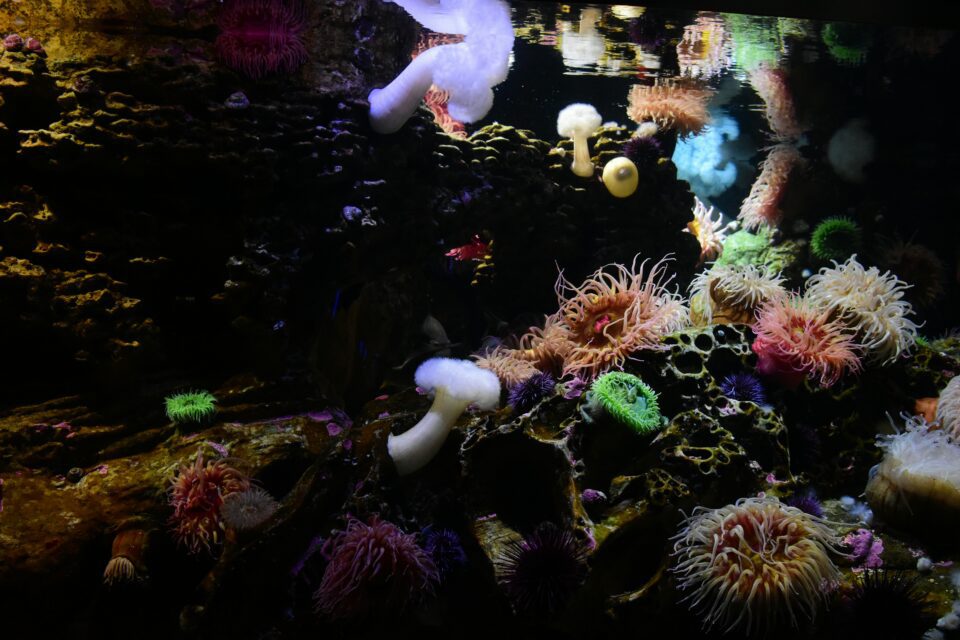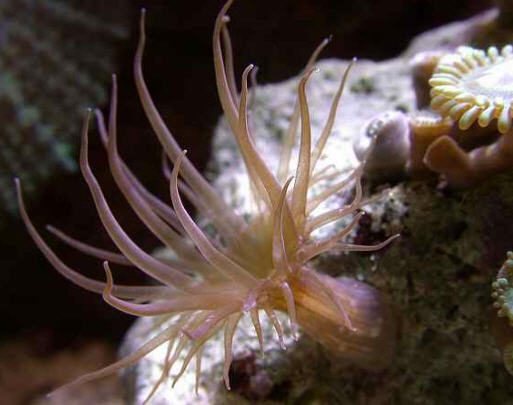
Euphyllia coral, encompassing various stunning varieties like Torch Coral, Frogspawn Coral, Hammer Coral, Octospawn, and Bubble Coral, adds unparalleled beauty and diversity to reef tanks. In this comprehensive guide, we’ll delve into different Euphyllia coral varieties, their care requirements, pest management, common diseases and treatments, fragging techniques, essential tips for successful reef tank keeping, and detailed insights into their compatibility, coloring, and expensive varieties.
Understanding Euphyllia Coral Varieties:
- Torch Coral (Euphyllia glabrescens): Known for its elongated tentacles resembling a torch, Torch Coral thrives in moderate to high light and moderate water flow. This coral variety comes in various color morphs, including green, purple, gold, and even rainbow combinations, adding vibrant hues to reef tanks. Caution: Torch Coral has stinging tentacles that can harm nearby corals and fish, so provide adequate spacing to prevent aggression.
- Frogspawn Coral (Euphyllia divisa): Characterized by branched tentacles resembling frogspawn, this coral variety prefers moderate light and flow, making it suitable for intermediate reef keepers. Frogspawn Coral comes in diverse colorations, from bright green to fluorescent pink and even multi-colored variants, creating stunning visual displays in reef aquariums.
- Hammer Coral (Euphyllia ancora): With hammer-shaped tentacles, Hammer Coral prefers moderate light and gentle flow, making it a popular choice for beginner to intermediate reef enthusiasts. This coral variety exhibits unique color patterns, including solid colors, gradient blends, and fluorescent tips, enhancing the aesthetic appeal of reef tanks.
- Octospawn (Euphyllia paradivisa): Featuring distinct octopus-like tentacles, Octospawn thrives in moderate light and flow conditions, adding unique elegance to reef tanks. Octospawn colonies display mesmerizing color combinations, ranging from solid pastels to vibrant rainbow hues, making them coveted additions for reef enthusiasts seeking striking coral specimens.
- Bubble Coral (Plerogyra sinuosa): Known for its bubble-shaped polyps, Bubble Coral requires moderate light and gentle to moderate flow, making it a captivating addition to reef aquariums. Bubble Coral colonies showcase bubbly structures in various sizes and colors, from creamy whites to deep greens, blues, and even purples, creating a whimsical underwater landscape.
Care Requirements for Euphyllia Coral:
- Lighting: Provide moderate to high-intensity lighting for most Euphyllia coral varieties, adjusting based on individual species’ preferences and coloration. Utilize LED fixtures with customizable spectrums to mimic natural sunlight and promote coral health. Aim for PAR levels between 100-250 depending on the coral’s placement and sensitivity to light.
- Water Flow: Maintain gentle to moderate water flow, avoiding strong direct currents that can damage delicate polyps. Utilize wavemakers, powerheads, or strategically positioned return pumps to create gentle, random flow patterns, ensuring all coral surfaces receive adequate water movement and nutrient exchange for optimal growth.
- Water Parameters: Maintain stable water parameters within recommended ranges, including temperature (75-80°F), salinity (1.024-1.026 sg), pH (8.1-8.4), alkalinity (8-10 dKH), and calcium (400-450 ppm) levels. Conduct regular water testing and adjustments to ensure a stable and suitable environment for Euphyllia corals.
- Feeding: While Euphyllia corals primarily rely on photosynthesis for nutrition, occasional target feeding with small meaty foods like mysis shrimp, brine shrimp, or coral-specific liquid foods can supplement their diet and promote growth. Feed sparingly and observe coral response to avoid overfeeding and water quality issues.

Pest Management and Removal:
- Pests: Vigilantly monitor for common pests like flatworms, nudibranchs, and Aiptasia anemones that can harm Euphyllia corals. Employ natural predators such as peppermint shrimp, emerald crabs, or manual removal methods using tweezers or brushes for effective pest control. Quarantine new additions and inspect them thoroughly before introducing them to the main tank.
- Diseases: Regularly inspect Euphyllia corals for signs of diseases such as Brown Jelly Disease, characterized by brown, jelly-like lesions on coral tissues. Implement quarantine procedures for new additions, maintain excellent water quality, and promptly treat infected corals with appropriate medications under professional guidance to prevent disease spread.
Fragging Techniques for Euphyllia Coral:
- Tools: Utilize sharp coral-cutting tools like bone cutters, coral saws, or specialized fragging kits for precise fragging. Wear protective gloves and eye protection during fragging to prevent injury and irritation from coral toxins.
- Procedure: Carefully cut coral branches or heads, ensuring each frag has ample tissue for recovery and growth. Trim any damaged or dead tissue to promote healthy healing and minimize stress. Secure frags to frag plugs, ceramic discs, or rubble using cyanoacrylate-based coral glue or epoxy putty, ensuring a stable attachment for new growth.
- Propagation: Place frags in a dedicated frag tank or isolated area with consistent lighting, water flow, and nutrient levels conducive to healing and acclimation. Monitor frags closely for signs of stress, infection, or predation, and gradually reintroduce them to the main tank once fully healed and established.
Compatibility and Coloring:

- Compatibility: Euphyllia corals are generally compatible with a wide range of reef tank inhabitants, including fish, invertebrates, and other coral species. However, exercise caution when placing aggressive corals or territorial fish near Euphyllia colonies to prevent damage, aggression, or stress-induced issues.
- Coloring and Expensive Varieties: Euphyllia corals exhibit diverse colorations based on species, lighting, water parameters, and environmental conditions. Some varieties, such as WYSIWYG (What You See Is What You Get) specimens or rare color morphs, can be more expensive due to their unique color patterns, intense fluorescence, or rarity in the hobby. Consider sourcing corals from reputable vendors or collectors to acquire premium specimens with vibrant coloring and desirable traits.
How to Dip Euphyllia Coral:
- Prepare a coral dip solution following manufacturer instructions, typically using iodine-based solutions, specialized coral dip products, or DIY solutions like Lugol’s iodine solution.
- Acclimate the coral to the dip solution by gently transferring it into a container with the prepared dip solution, ensuring full submersion and minimal stress.
- Allow the coral to soak in the dip solution for the recommended duration (usually 5-10 minutes), gently swirling or agitating the container to dislodge any pests, algae, or debris.
Conclusion
Euphyllia coral varieties, including Octospawn and Bubble Coral, offer captivating beauty and unique characteristics to reef tank ecosystems. By understanding their care requirements, managing pests, practicing fragging techniques, and maintaining optimal water quality, reef enthusiasts can enjoy thriving and vibrant Euphyllia coral colonies in their aquariums. Remember to observe and adapt care practices based on individual coral needs for long-term success in reef tank keeping. With dedication, knowledge, and proper care, your reef tank can showcase the stunning diversity of Euphyllia corals while promoting a healthy and balanced aquatic environment.




